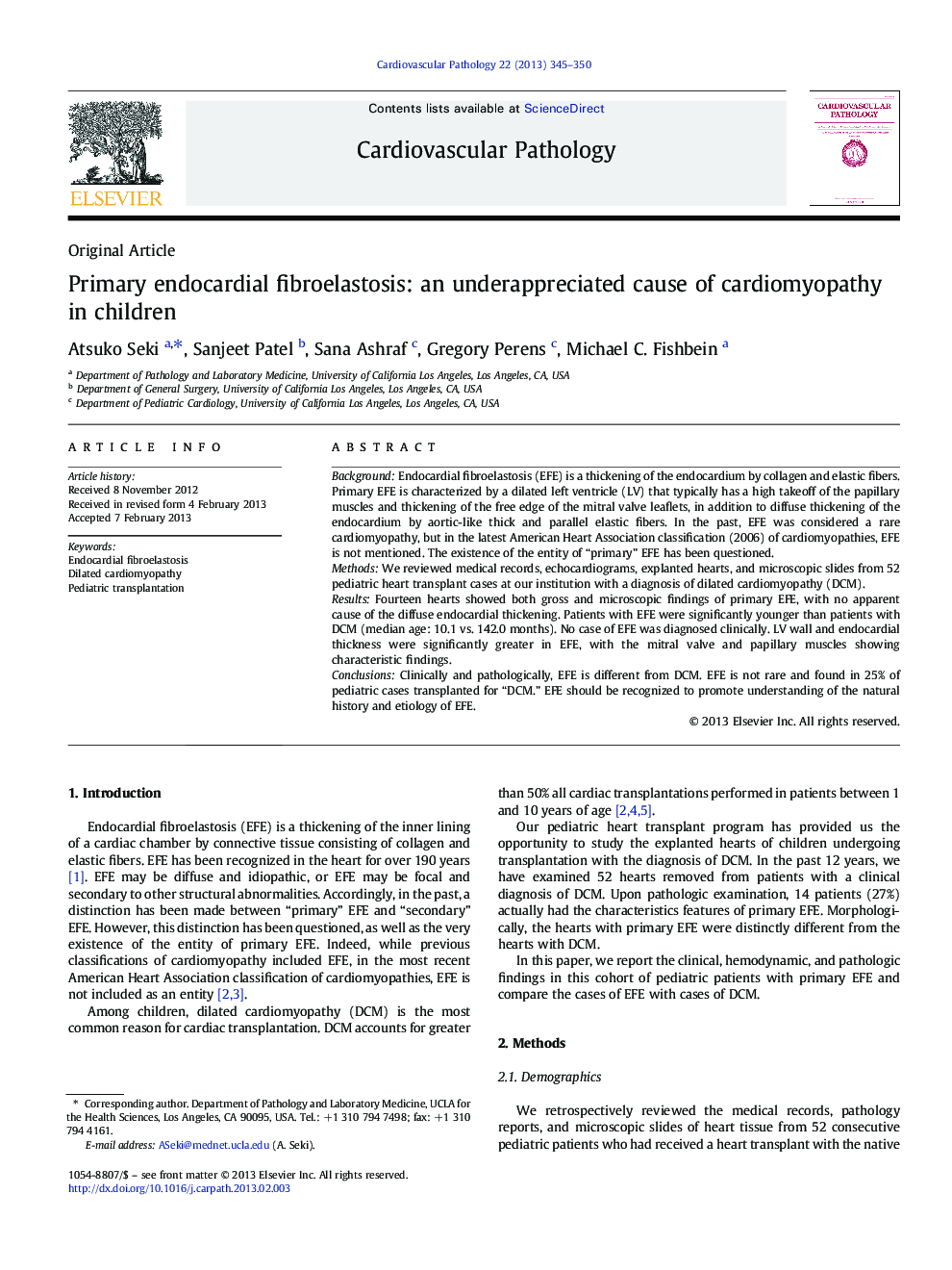| Article ID | Journal | Published Year | Pages | File Type |
|---|---|---|---|---|
| 2898773 | Cardiovascular Pathology | 2013 | 6 Pages |
BackgroundEndocardial fibroelastosis (EFE) is a thickening of the endocardium by collagen and elastic fibers. Primary EFE is characterized by a dilated left ventricle (LV) that typically has a high takeoff of the papillary muscles and thickening of the free edge of the mitral valve leaflets, in addition to diffuse thickening of the endocardium by aortic-like thick and parallel elastic fibers. In the past, EFE was considered a rare cardiomyopathy, but in the latest American Heart Association classification (2006) of cardiomyopathies, EFE is not mentioned. The existence of the entity of “primary” EFE has been questioned.MethodsWe reviewed medical records, echocardiograms, explanted hearts, and microscopic slides from 52 pediatric heart transplant cases at our institution with a diagnosis of dilated cardiomyopathy (DCM).ResultsFourteen hearts showed both gross and microscopic findings of primary EFE, with no apparent cause of the diffuse endocardial thickening. Patients with EFE were significantly younger than patients with DCM (median age: 10.1 vs. 142.0 months). No case of EFE was diagnosed clinically. LV wall and endocardial thickness were significantly greater in EFE, with the mitral valve and papillary muscles showing characteristic findings.ConclusionsClinically and pathologically, EFE is different from DCM. EFE is not rare and found in 25% of pediatric cases transplanted for “DCM.” EFE should be recognized to promote understanding of the natural history and etiology of EFE.
